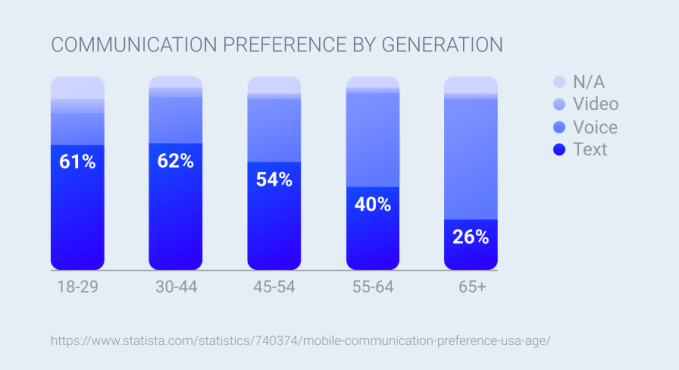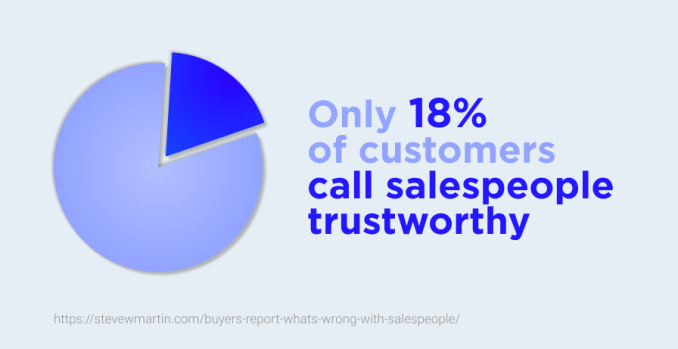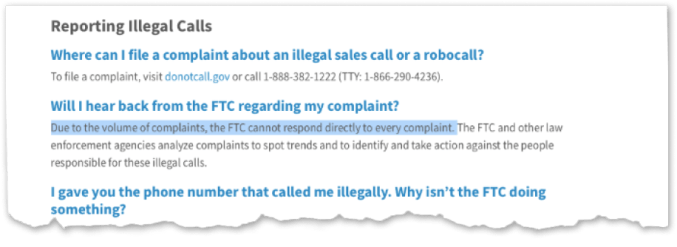There’s no doubt that the way we communicate is changing. Around the world, people are increasingly abandoning phone and email, and instead choosing to socialize and conduct business over messengers. With so many of us glued to our screens, it’s even become a national pastime to shake our fists and lament what communication is coming to these days.
Many big-budget companies and forward-thinking startups are already taking advantage of the chat craze. They use Facebook Messenger, WhatsApp and others as an opportunity to reach new audiences and offer existing customers a totally new way of connecting.
Marketers and support teams especially have leveraged this trend to leave their hated 1-800 numbers and contact forms in the dust, while also scaling up their lead capture, appointment booking and customer care.
Yet, despite the increasing popularity of messenger apps, the vast majority of businesses are still leaving this lucrative communication channel untapped.
It begs the question: why aren’t more companies taking advantage of instant messaging?
Messengers? No thanks.
If you think about it, it’s funny that we even call our devices “phones” anymore, considering that fewer than 30% of people 44 and younger favor voice communication, which is, you know — the actual “phone” feature. The overwhelming majority prefer text-based interaction, and it’s projected to keep up the momentum, with messengers expected to exceed 2.5 billion users by 2021.

However, at amoCRM, when we talk to entrepreneurs about doing business on chat apps, the initial reaction is often a strong “No thanks — messengers are for personal communication only”.
After all, business leaders can see what’s happened to phone and email. They know that marketers have been taught to strategically “stay top-of-mind”, which is a nice way of saying “fill up their inboxes”. They know that top-rated sales literature recommends merciless follow-up tactics, advising unmotivated sales reps that these days “it takes 18 dials to connect with a buyer”.
Eighteen calls! And that’s the kind of best practice that is held over a sales rep’s head when they don’t meet their quota: you didn’t follow up enough.
Even worse, the future that is painted for phone and email doesn’t offer much hope. It’s mostly focused on automating these very same spammy tactics.
Falling into the same cycle
Modern entrepreneurs are fighting an uphill battle to earn back the reputation that telemarketing and outbound sales continue to drag through the mud. After decades of companies harassing customers, today’s leaders are tasked with proving that they see buyers as more than sacks of cash.

Unfortunately, though, the competition entrepreneurs face now is the fiercest in history. Competitors from around the world are only a click away, and they’re likely to already be in your prospective customer’s inbox. So cutting through the noise often means stooping to their level and sending out a weekly newsletter of your own… just because everyone else is doing it. Even with good intentions, it’s a vicious cycle.
The unpolluted messenger app
With email and phone lost to spam, no one wants messengers to meet the same fate. Chat apps are a personal space — they’re the last bastion free from businesses and their thinly veiled commercial interests. Allowing companies onto that platform might mean losing yet another front in the ongoing invasion of commercial into personal life.
Business owners picture their own messaging apps full of spam, and they predict that the general public would never be on board. So they assume that chat apps have no chance in business, and the trend will fizzle out.
If you look closely, however, you’ll see that the real war we’re waging is not personal versus commercial — it’s a war against unwanted spam. And the resistance to doing business on messengers? Simply the fear of yet another platform becoming polluted.
The fact is, there is no division between personal and commercial — brands are a part of our lives and their messages are not de facto spam. There are newsletters that we love reading, companies whose triumphs we celebrate and discounts that we eagerly wait for. If we could guarantee that the messages we received were valuable to us, we’d be happy to receive them in our favorite messaging apps alongside conversations with friends and family.
Communication on the customer’s terms
In the battle against spam, messengers actually offer the best defence. Considering that we have to talk to businesses somehow, it’s better to do it on a channel that actually protects and empowers.
Because they were developed in a world plagued by spam, chat apps have built-in protection against it. Consider email, phone and SMS, where the only barrier for contacting a person is knowing their email address or phone number. Messenger apps, on the other hand, require customers to send businesses the first message or actively subscribe. That makes cold outreach virtually impossible.
And if you’re subscribed, but decide you’ve had enough, all you have to do is delete the chat. It’s a heckuva lot easier than unsubscribing to email newsletters, which often redirect you to a landing page to confirm that you really do want to unsubscribe, yes, you’re really sure.
Same thing when it comes to reporting spam. In messenger apps, it takes one tap. Compare that to the hoops you jump through to file a complaint with the do-not-call registry (plus how effective that actually is).

Messengers put customers in way more in control that email and phone ever have, but it turns out they’re good for business too.
The benefit of a messenger-based strategy
The game of contacting massive amounts of people to drum up a conversion rate you can count on one hand is difficult and offers low returns. It takes a lot of work to set up spam emails and a lot of human power to shred through call lists, not to mention the cost to buy or develop these lists in the first place.
And for what?
If you stop treading water for long enough to take a good look at your customers, you’ll see that the ones acquired through tactics like these probably aren’t brand ambassadors. When someone else comes along with a similar offering and good service, your days are numbered.
A better, more sustainable strategy is to treat your customers with the respect they deserve. Rather than chasing them down and cornering them like prey, focus on attracting them of their own volition. Develop a presence on the channels that they love, rather than forcing them to connect where it’s comfortable for you. Empower them to engage you at their convenience: the option for spurts of chatting when they’re available to talk, paired with the ability to send a message, forget about it and check your response when they’re free.
Change isn’t easy… or is it?
Don’t worry if you feel like you’re not ready. After all, our hyperconnectivity means we’re already navigating questions about automation, privacy, ethics — all while doing business at the most competitive time in history.
But don’t fold. Holding fast to the status quo may be easier, but it’s also a sure way to fail.
Instead, take advantage of the opportunity that messenger-based marketing and sales gives you to make your customers feel comfortable and in control. That’s what they want: 61% are already ready for the chat revolution, citing messengers as the easiest and most convenient way to talk to a company.
And it’s not hard to start. Adding chat apps to your arsenal is as easy as adding a messenger button to your Facebook page or creating an account on apps like Telegram. Then just let your customers know that you’re happy engage with them there — and of course, make sure you have notifications turned on!

After that, there are a thousand bells and whistles to take advantage of, including adding appointment booking, payment processing and even chatbots. The great thing is that you can scale up at your own pace, and when you’re ready, there are tools like amoCRM available to make sure that conversations from all of your many messengers are synced in a single, unified inbox.
Abandon the status quo
The fact is, if we ever want to get out of the vicious cycle of spam and be-spammed, we need to stop producing it. Messengers offer a way forward, and customers are already on board. What’s stopping you?